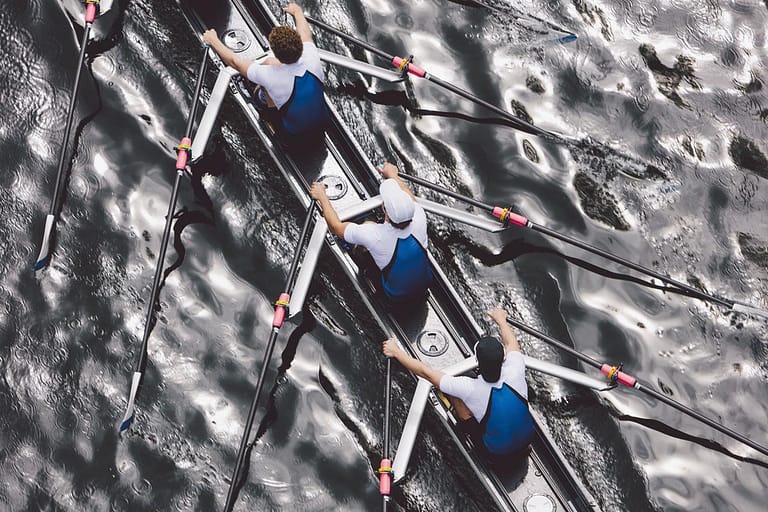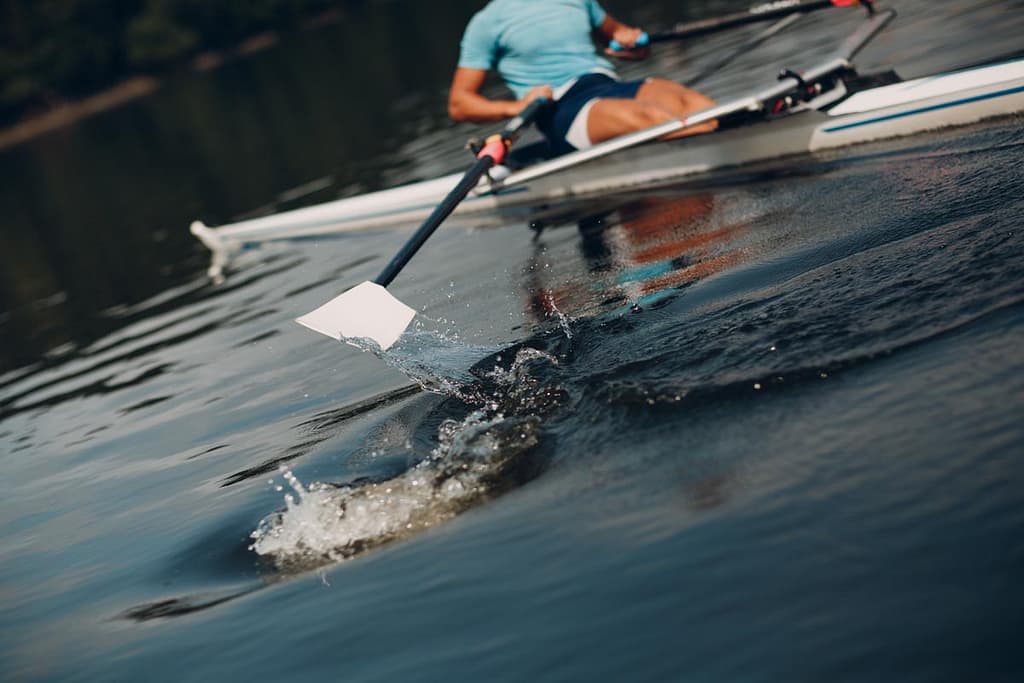Olympic Rowing Facts: A Comprehensive Overview
Rowing is a thrilling and demanding sport that has captivated audiences for centuries. And when it comes to the pinnacle of rowing competition, nothing beats the Olympics. Here’s a deep dive into the world of Olympic rowing. It covers everything from its rich history to the tough physical and mental challenges faced by athletes.

The History of Olympic Rowing: From Ancient Times to the Present
Rowing has been a part of the Olympic Games since the very beginning. It was in the ancient Greek Olympics. It debuted in the modern Olympics at the 1900 Paris Games. Since then, rowing has evolved and grown, with new events and categories added over the years.
How to Get Started in Olympic Rowing: Equipment, Training, and Techniques
If you’re interested in getting started in Olympic rowing, there are a few key things you’ll need:
- A rowing shell (boat) and oars
- Access to a body of water suitable for rowing
- Proper technique and training
Rowing technique involves four main phases: the catch, drive, finish, and recovery. Mastering these phases takes time and practice. But, with dedication and hard work, anyone can become a skilled rower.
The Olympic Rowing Events: Singles, Doubles, Quads, and Eights
Olympic rowing has many events. Each has its own unique challenges and rewards. Here are the main categories:
| Event | Description |
|---|---|
| Single scull | One rower with two oars |
| Double scull | Two rowers, each with two oars |
| Quad scull | Four rowers, each with two oars |
| Pair | Two rowers, each with one oar |
| Four | Four rowers, each with one oar |
| Eight | Eight rowers, each with one oar, plus a coxswain |
In each category, there are also light and heavy divisions. There are also men’s and women’s events.
Olympic Rowing Rules and Regulations: Understanding the Course and Scoring
Olympic rowing happens on a 2,000-meter course. Races last 5 to 8 minutes. The goal is simple: to cross the finish line first. But the rules and regulations governing the sport are anything but simple.
There are strict guidelines for everything. They cover the boat’s dimensions. They also cover the weight limits for athletes in lightweight events. The role of the coxswain is critical to success. They steer the boat and coordinate the rhythm of the rowers.

The Physical Demands of Olympic Rowing: Strength, Endurance, and Technique
Rowing is a full-body workout. It needs strength, endurance, and technique. Rowers need powerful legs. They also need a strong core and excellent strength and coordination in their upper body.
But rowing isn’t just about brute force. It’s also about finesse, timing, and teamwork. Rowers must move together with their teammates. They must keep a steady rhythm and pace throughout the race.
Olympic Rowing Techniques: Catch, Drive, Finish, and Recovery
The rowing stroke has four phases: catch, drive, finish, and recovery. They are the basis of good rowing technique. Here’s a breakdown of each phase:
- Catch: The oar blade enters the water, and the rower begins to apply pressure.
- Drive: The rower uses their legs, back, and arms to pull the oar through the water.
- Finish: The oar blade exits the water, and the rower begins to move back up the slide.
- Recovery: The rower returns to the starting position, preparing for the next stroke.
Mastering these phases takes time and practice. But, it’s essential for achieving fast and efficient boating.
Mental Preparation for Olympic Rowing: Focus, Strategy, and Teamwork
Rowing in the Olympics requires strength and technique. It also needs mental toughness and strategy. Rowers need to stay focused and motivated. Training is grueling and competition is high-pressure.
They also need to work as a team. They must communicate well and adapt to changing conditions on the water. A successful rowing crew can think and act as a single unit. They read each other’s intentions and counter challenges instantly.
Famous Olympic Rowers: Icons and Inspirations in the Sport
Throughout Olympic rowing’s history, many iconic athletes have inspired and influenced the sport. Here are just a few examples:
- Steve Redgrave (Great Britain) won gold medals. He won them in five consecutive Olympics from 1984 to 2000.
- Elisabeta Lipa (Romania) won eight Olympic medals. They include five gold. She won them between 1984 and 2004.
- Olaf Tufte (Norway): Won gold medals in the single scull event in 2004 and 2008.
- Kathleen Heddle and Marnie McBean from Canada won three gold medals and one bronze together. They won them as a pair in the 1992 and 1996 Olympics.
These athletes and many others have shaped rowing. They have also inspired new generations of competitors.

The Evolution of Rowing Equipment: From Wooden Shells to High-Tech Innovations
Rowing equipment has come a long way since the early days of the sport. In the past, rowing shells were made of wood and were heavy and cumbersome. Today, shells are made of light materials like carbon fiber. They are designed for top speed and efficiency.
Other innovations in rowing equipment include:
- Ergometers: Indoor rowing machines that simulate the experience of rowing on water.
- Sliding riggers: A system that lets the rower’s seat move with the oar. It reduces drag and increases speed.
- The footplates are adjustable. They let rowers set the position of their feet for comfort and power.
These and other tech advances have made rowing faster, safer, and more accessible.
Olympic Rowing Venues: Iconic Locations and Memorable Moments
Olympic rowing has happened in some of the most beautiful and famous locations. Here are some examples:
- Lagoa Rodrigo de Freitas is in Rio de Janeiro, Brazil. It was the venue for the 2016 Olympics. The lagoon is known for its stunning views of the nearby mountains.
- Eton Dorney (London, England) was the venue for the 2012 Olympics. It is on the historic Eton College campus.
- Lake Lanier is in Atlanta, USA. It was the venue for the 1996 Olympics. The lake was created specifically for the Games and is now a popular spot for fun.
Each of these venues has seen unforgettable Olympic moments. They include record-breaking performances and dramatic finishes.
Olympic Rowing Records and Milestones: Unforgettable Achievements in the Sport
Over the years, Olympic rowers have achieved some truly remarkable feats. Here are a few notable records and milestones:
- The United States has won the most Olympic rowing medals of any country, with over 130 total medals.
- The men’s eight event has been won by the United States more times than any other country, with 12 gold medals.
- Romania has dominated the women’s eight event. They have won five gold medals since the event began in 1976.
- The United States men’s eight has the longest winning streak in Olympic rowing history. They won every Olympic gold medal from 1920 to 1956.
These and many other achievements have cemented the legacy of Olympic rowing. It is one of the most exciting and competitive sports in the world.
The Impact of Olympic Rowing: Inspiring Communities and Promoting Health
Beyond the thrill of competition. Olympic rowing also greatly impacts the communities and individuals involved in it. Rowing clubs and programs around the world provide opportunities. They are for people of all ages and backgrounds. They can get involved in the sport and enjoy its many benefits.
Rowing is a great way to improve health. It builds strength, endurance, and heart fitness. It’s also a great way to cut stress. It improves mental health and builds social connections. You make them with others who love the sport.
At the Olympic level, rowing promotes global cooperation. It brings together athletes from different countries and cultures. They compete and celebrate the sport they love. For the athletes, competing on the world stage is a once-in-a-lifetime chance. It lets them test their limits and achieve their dreams.

